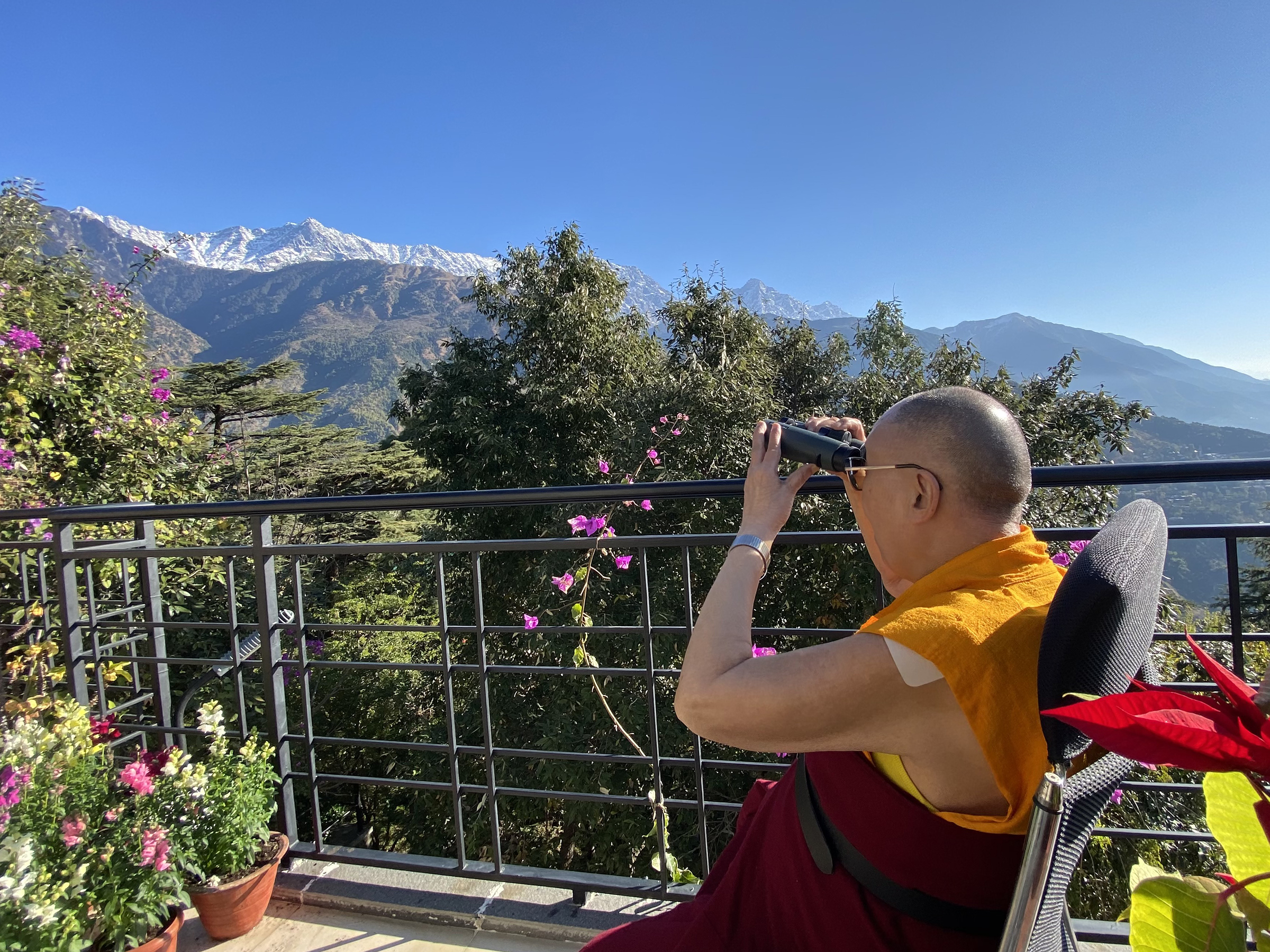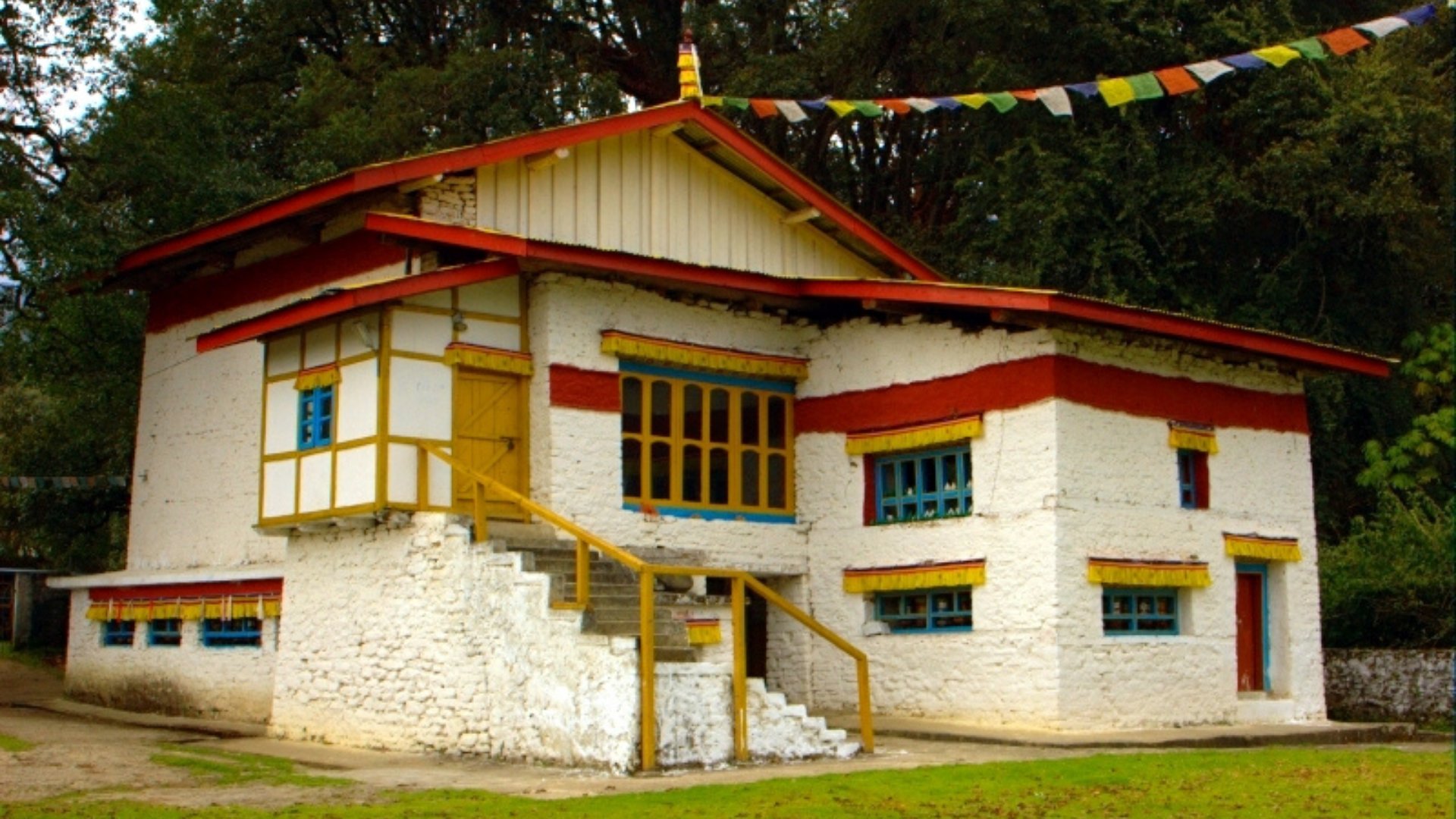Narendra Modi is perhaps the first Indian PM to have expressed his birthday wishes publicly (emphasis added) to Tibetan spiritual leader, His Holiness 14th Dalai Lama. This he did on the latter’s 86th birthday on July 6.
Indian Air Force Shows Its Prowess With ‘Swarm Drone Technology’; Tweets Images: Watch
Given the deteriorating relations between India and China over the continuing military standoff in Ladakh for more than a year now, has Modi decided to use the Dalai Lama as a strategic asset against Beijing, a policy that was demanded by many for years?
The Dalai Lama, who has been living in exile in India since 1959, is a “separatist” for China but an “honored guest” of India, which has provided him asylum to carry on his “spiritual” activities in the country. Although his “government-in-exile” in Dharamsala in Himachal Pradesh state is permitted, he and his followers are not allowed to indulge in political activities.
https://twitter.com/narendramodi/status/1412310494870913032
China has never liked the Dalai Lama’s presence in India and has always accused India of allowing him to promote his “separatist” agenda. Beijing has always applied bullying tactics whenever the Dalai Lama or any member of the government in exile visits the “disputed areas”, particularly Tawang in Arunachal Pradesh that has deep religious, cultural and historical ties with Tibet.
In fact, the sixth Dalai Lama was born in Tawang in the 17th century and the present Dalai Lama had entered India through this town in 1959, following China’s military takeover of Tibet.
Why Did Netizens ‘Mock’ Nigeria For Importing JF-17 Thunder Fighter Aircraft From China & Pakistan?
Invariably, India has succumbed to these bullying tactics, imposing severe restrictions on interactions of the officials of the Tibetan government in exile or demonstrations of the Tibetans living in India (about 200,000 in various parts of the country).

Though the Modi government and predecessor government led by Manmohan Singh have allowed the Dalai Lama on few occasions, usually the Tibetan leaders’ movements are curtailed in India whenever any important bilateral visits of Indian and Chinese leaders to each other’s country are round the corner.
Given the traditional pro-Tibet positions of the BJP, it was expected that Modi would change this “opaque” policy towards the Tibetans living in India. And he did raise some hopes when he invited the then Sikyong or leader of the Tibetan “government in exile”, Lobsang Sangay, to attend his swearing-in ceremony on May 26, 2014.
In 2016, the Dalai Lama was also invited to the Rashtrapati Bhavan (the Presidential Palace) and was allowed to visit Tawang in 2017, just months before the Doklam standoff.
Tibet Policy Wasn’t Consistent
However, given Modi’s overall strategy to enhance ties with China, something that was given primacy until the Ladakh standoff, his government’s policy towards the Tibetans, like that of Manmohan Singh, remained neither transparent nor consistent. It wavered along with the ups and downs in India’s engagement with China.
In 2018, the then Cabinet Secretary PK Sinha was understood to have written a letter to senior political leaders and government officials that they should avoid Tibet-related events in India. Modi did not invite the Sikyong to his 2019 oath-taking ceremony. What was more, the Modi government did not allow the high-profile event marking the 60th anniversary of the Dalai Lama’s arrival in India that was supposed to be held in Delhi; it had to shift to Dharamshala.
https://twitter.com/detresfa_/status/1411268326114795521
It is said Modi sends his birthday wishes to the Dalai Lama every year. But unlike this year, those were done strictly privately and never publicized. This time he has tweeted that he greeted the Tibetan spiritual leader through a phone call.
It may be also noted that greetings were also conveyed to the Dalai Lama by at least two other central ministers on Twitter – Union Minister for Road Transport and Highways Nitin Gadkari and Housing and Urban Affairs Minister Hardeep Puri.
Why Chinese Stealth Fighter Jets Have ‘No Buyers’ In Sight Unlike The US’ F-35 & Russian Su-57 Jets?
It is quite possible that China will come out with a strong statement on all this, given its past practices. And it is quite probable that some powerful voices within India will also question the government’s dealing with the Dalai Lama as they think that the spiritual leader’s presence and activities are big impediments to the growth of normal relations between India and China.
Should The Dalai Lama Leave India?
There is now a powerful school of thought in India that it is time for the Dalai Lama to leave India. Along with politicians from India’s two communist parties, the likes of former Minister of External Affairs Kunwar Natwar Singh, BJP leader Subramanian Swamy, media baron N. Ram and influential columnist Prem Shankar Jha have systematically argued that China has not been able to solve its Tibet problem because of India, which has given the Dalai Lama shelter and kept the Tibetan political and cultural identity alive.

Swamy has argued in his book, India’s China Perspective that Sino-Indian relations can never become close and friendly unless India’s blind spot on Tibet and the Dalai Lama is removed. He advocates that India has to “digest and internalize” the view that the “shortest political route to Lhasa is via Beijing, and not across the Himalayas.”
In any case, Swamy says, when Tibet was autonomous or independent from China between 1890 and 1950, it was never friendly with India and had laid claims to the Indian states of Sikkim and Arunachal Pradesh as well as Bhutan.
This school of thought argues that Tibet is strictly China’s domestic matter and India should not directly or indirectly raise Chinese suspicions. It views China as a peace-loving country that has solved boundary disputes with all its neighbors except India and predicts that if the Dalai Lama leaves India or his activities are curtailed, China will be flexible in border negotiations. In fact, the logic is that a “grateful” China will rethink its blind support to Pakistan, which is India’s most problematic neighbor.
The “Indian friends” of China point out that continued support to the Dalai Lama could boomerang against India. They ask, is China not capable of promoting Kashmiri, Assamese, Naga and Punjabi secession from India? According to these China supporters, it is worth sacrificing the Dalai Lama to avoid a future conflict and possible joint attack by Pakistan and China.
However, these arguments are based on two unstated premises. First, China is much more powerful than India and so it is better to buy peace with Beijing and leave the Dalai Lama to face his own fate.
https://twitter.com/sidhant/status/1410482064357412865
Second, in this bipolar world, China is best suited to challenge US “hegemony” and make the world truly multipolar. So India must be friendly with China. Of course, the overwhelming majority of Indians wanting to befriend China hates the United States.
India Should Project Its Military Might
However, neither of these premises is convincing. To argue that India is militarily weak and should surrender to China is insulting to the country, its armed forces and strength, which many unbiased security analysts argue to be as good as, if not better than, China’s.
The pro-China lobby in India downplays the fact that while China promotes a multipolar world, it is not interested in a bipolar Asia. True to its theory of being the Middle Kingdom, it will not allow another pole, whether India or Japan, in Asia.
Historically speaking, China has made everything possible effort to halt the growth of Indian influence and dent India’s eminence. This policy toward India will continue whether or not New Delhi appeases Beijing on the Dalai Lama issue.
India’s Tibet Strategy
On the other hand, many experts argue that by continuing to shelter the Dalai Lama and his followers, India stands to gain more.
First, his presence adds to India’s standing in the global community as a democratic country, given the Dalai Lama’s innumerable powerful supporters around the world. It strengthens India’s credentials for offering political asylum to democratic leaders escaping and fighting oppressive authoritarian regimes.

Secondly, India cannot just sever its historical and cultural links with Tibet to please the Chinese. India is bound with Tibet, as two of the holiest Hindu shrines, Mount Kailash and Lake Manasarovar, are located there. Tibet is also the source of four major rivers that flow into India.
The Dalai Lama has also periodically pointed out that the Tibetans are descendants of Rupati, king of a south Indian kingdom who escaped to Tibet with his subjects after the epic Mahabharata War.
As for the king of Tibet, it is believed that around 150 BC a prince of the Magadha Kingdom (present-day Bihar state) escaped to Tibet after being exiled from his kingdom. Tibetans named him Nyatri Tsenpo and made him their king, and so began the Tibetan royal lineage.
Thus, a closer look at geography, ancestry and royal dynasties reveals close ties between India and Tibet.
Thirdly, whether it was Britain until 1947 or the former Soviet Union until 1990, the recent history of international relations suggests that other countries have always considered Tibet as belonging to “India’s sphere of influence.”
Finally, and most importantly, the presence of the Dalai Lama and his innumerable assertions supporting India on the boundary disputes strengthens India’s claims of territorial rights during negotiations with China. All told, historically speaking, China never was a neighbor of India; it was Tibet.




